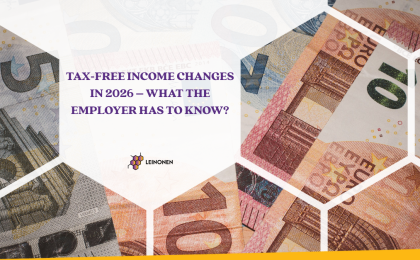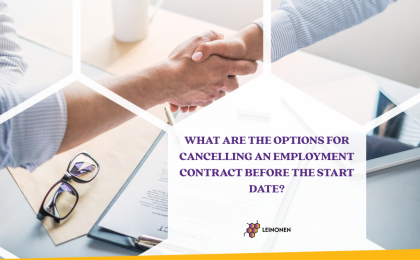If taxpayers have already become accustomed to the national reverse charge mechanism in the event of immovable property, then in a couple of months metal products will also be included in the list of goods subject to the reverse charge mechanism. However, as before, the greatest attention must still be paid to the reverse charge mechanism in the event of immovable property since not just any immovable property is subject to the reverse charge mechanism. Sometimes immovable property needs to be subject to taxation in the usual manner, just like any other goods. When and under which conditions must immovable property be subject to the reverse charge mechanism?
Supply of immovable property is, as a rule, supply exempt from tax. By informing a tax authority before the conduct of a transaction, the sales or leasing of immovable property may be subjected to an optional value added tax (VAT) if the transaction is carried out between taxable persons. Optional taxation cannot be applied in the event of the sales or leasing of dwellings. It may, at first, seem strange why an operator should wish to optionally add VAT, but it has, in fact, a completely understandable and logical explanation. If the seller of immovable property has, for the purpose of (upon buying or improving) selling immovable property, themselves incurred any costs to which VAT has been applied and has deducted these costs as input VAT, then in the event of sales exempt from tax the input VAT paid upon purchase or construction must be repaid to the State. The reason is that it is not permitted to deduct input VAT on expenses incurred for the purpose of supply exempt from tax. However, if the new buyer of the registered immovable is a person engaged in business, adding VAT to the transaction will not pose any problems to them. The seller adds optional VAT to the transaction and retains the right to deduct input VAT and the buyer can deduct the added VAT as input VAT provided that the registered immovable is bought for the purpose of taxable business. VAT is a neutral tax that may not encumber an operator.
If an operator has informed the tax authority about adding optional VAT, the implementation of the reverse charge mechanism (the buyer has the obligation to calculate and pay VAT) must be kept in mind upon both recognising the transaction in the tax return and performing the tax obligation. If operators have already become accustomed to the reverse charge mechanism in the event of trade between Member States, their contact with the national reverse charge mechanism is not so frequent. This is so, above all, due to the fact that the reverse charge mechanism at the national level is an exception that can be used only in the event of some specific goods. Before the accession of Estonia to the European Union in 2004, the national reverse charge mechanism was used in Estonia upon sales of timber. Upon the accession to the European Union, Estonia had to waive this option. However, today Estonia has obtained the right to implement the reverse charge mechanism in the event of sales of immovable property, precious metal and scrap metal. From the beginning of 2017, the list will also include metal products, a more detailed nomenclature of which is set out in clause 411 (2) 5) of the Value-Added Tax Act (VATA).
The reverse charge mechanism means that the seller issues a sales invoice along with VAT, but refers in the sales invoice to § 411 of the VATA and declares the sales amount only on the 9th line of the VAT return. The buyer is obliged to calculate and pay VAT. This means that the buyer themselves adds VAT (20%) to the sales price and pays it to the State. If the buyer has the right to deduct the entire input VAT as expenses related to business, the buyer will not incur any actual tax obligation. The buyer declares the transaction in lines 1, 4, 5, 7 and 7.1 of the VAT return. Line 5 is, of course, filled in provided that the buyer has the right to deduct input VAT. It is namely the seller who must, above all, be attentive in order for the sales not to be declared in the usual manner in lines 1 and 4. It should be pointed out that if a decision is made to subject a transaction to optional tax, implementation of the reverse charge mechanism thereafter will be mandatory.




